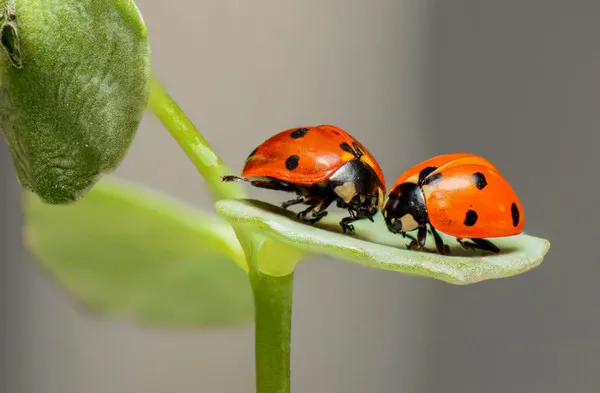Integrated Pest Management (IPM) has become a cornerstone of modern agricultural practices, aiming to minimize the use of chemical pesticides while maintaining sustainable and economically viable crop production. In recent years, the use of beneficial insects has gained significant attention as an effective and environmentally friendly approach to pest control in greenhouse horticulture. Let's shed light on the crucial role of beneficial insects in greenhouse IPM strategies and highlight their importance in maintaining a healthy and thriving crop ecosystem.
Understanding Beneficial Insects
Beneficial insects are organisms that play a crucial role in maintaining the balance of pests and diseases in agricultural systems. These insects include predators, parasitoids, and pollinators, each with its specific role in pest control. Predators consume a wide range of pests, while parasitoids lay their eggs inside host pests, leading to their eventual demise. Pollinators, on the other hand, are vital for the reproductive success of many flowering crops.
Reduced Reliance on Chemical Pesticides
One of the primary advantages of using beneficial insects in greenhouse pest control is the significant reduction in the reliance on chemical pesticides. Chemical pesticides may have detrimental effects on the environment, including the development of pesticide resistance in pests and the risk of residue accumulation in crops. By introducing beneficial insects, growers can minimize pesticide use, thereby promoting a healthier and more sustainable production system.
Targeted Pest Control
Beneficial insects offer a targeted approach to pest control, focusing on specific pest species while leaving non-target organisms unharmed. Unlike broad-spectrum chemical pesticides, which may harm beneficial insects and disrupt the overall ecosystem, natural enemies selectively prey on pest populations, maintaining a balance that promotes long-term pest control.
Common Beneficial Insects Used in Greenhouse IPM
Ladybugs (Coccinellidae)
Ladybugs are well-known and widely used beneficial insects in greenhouse pest control. They primarily feed on aphids, scale insects, mealybugs, and mites. Ladybugs are highly effective in reducing aphid populations, which are notorious for causing damage to various crops. Additionally, their bright colors make them visually appealing, making them a favorite among both growers and consumers.

Green Lacewings (Chrysopidae)
Green lacewings are voracious predators that consume a variety of soft-bodied pests, including aphids, thrips, whiteflies, and caterpillar eggs. The larvae of green lacewings are particularly beneficial, as they actively search for prey and feed on large numbers of pests during their development.
Parasitoid Wasps (Hymenoptera)
Parasitoid wasps are small, non-stinging wasps that lay their eggs inside host pests. As the eggs hatch, the larvae feed on the host, eventually causing its death. These wasps are highly effective against pests such as whiteflies, aphids, and caterpillars. Several species of parasitoid wasps are commercially available for greenhouse applications.
Implementing Beneficial Insects in Greenhouse IPM
Proper Identification and Monitoring
To effectively incorporate beneficial insects into greenhouse IPM programs, it is crucial to identify and monitor the pest populations accurately. Regular scouting and monitoring help determine the pest pressure, identify the pest species, and evaluate the effectiveness of beneficial insects in controlling the pests.
Timing and Release Strategies
Timing is crucial when introducing beneficial insects. The release of natural enemies should coincide with the presence of pest populations to ensure their successful establishment and efficacy. Several factors, such as temperature, humidity, and crop growth stage, should be considered when determining the optimal timing and release rates of beneficial insects.
Habitat Enhancement and Conservation
Creating a conducive environment for beneficial insects is essential for their long-term survival and effectiveness. This can be achieved through habitat enhancement and conservation measures, such as providing nectar-rich flowers for adult natural enemies, installing shelter structures, and reducing the use of broad-spectrum pesticides.
Challenges and Considerations
While beneficial insects offer significant benefits in greenhouse pest control, several challenges and considerations need to be addressed for successful implementation:
Compatibility with Other Pest Management Strategies
Beneficial insects are most effective when used as part of an integrated approach, complementing other pest management strategies. Growers should consider the compatibility of beneficial insects with existing practices, such as cultural controls, physical barriers, and targeted pesticide applications.
Knowledge and Expertise
Proper knowledge of the biology, behavior, and requirements of beneficial insects is crucial for their successful implementation. Growers may need to consult with agronomists, entomologists, or other experts to ensure the correct selection, release, and monitoring of beneficial insects.
Doing IPM the right way
Beneficial insects play a vital role in greenhouse Integrated Pest Management, offering a sustainable and effective alternative to chemical pesticides. Their targeted pest control, reduced pesticide reliance, and ecological benefits make them an essential component of modern horticultural practices.
By understanding their importance, selecting the appropriate natural enemies, and implementing them in a well-planned IPM strategy, growers can enhance the sustainability and productivity of their greenhouse operations while minimizing environmental impacts.
For more information:
ecoation
www.ecoation.com
info@ecoation.com
